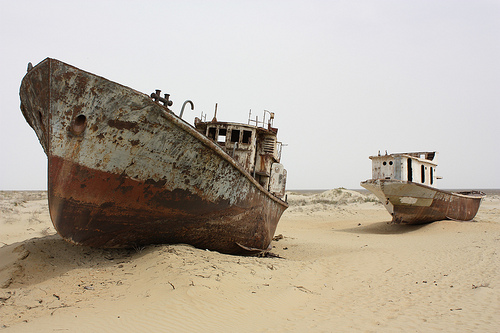Tajikistan is the country with little fossil fuels but sufficient water resources that generates most of its energy from hydroelectric stations such as Nurek, however the energy is not covering the basic population and industrial needs, as a result, the cities and villages are hit by regular blackouts in winter. Many rural residents have limited access to energy and use firewood for cooking food, and some crop waste and dried cow dung for heating their homes, which leads to serious deforestation across the country and human casualties.
In November 2018 Tajikistan is launching $4-billion mega dam. Rogun dam will be the biggest and tallest in the world.* The dam is built on the Vakhsh river which is tributary to Amudarya, the major river basin in Uzbekistan. The project dated from 1965 is meant to put an end on energy defficiency in the country and the region. The plans go as far as supplying energy to parts of Afghanistan and Pakistan. The prospects look good, yet not for Uzbekistan, located in the downstream of Amudarya river.
The Central Asian region prone to severe climate change has already seen serious alteration to the environment in the last 50 years. Intentional diversion of 2 major river basins for agricultural purposes resulted in desiccation of the The Aral Sea within decades, which in turn led to modification of land surface and more extreme fluctuations of temperature in the region.
Uzbekistan is located in high risk zone of water scarcity.** According to the official reports from Ministry of agriculture of Uzbekistan “Within 10 years Uzbekistan won’t have the water resources to meet its needs” (V.Antonov). The impact of climate change on agriculture and welfare of the population is terrifying. 300000 hectares of crops devastated by drought in 2004, affected livelihood of 50000 families. The population grows by 500000 a year on average, adding pressure to the resources.***
One scientific journal**** provides estimation of environmental and monetary impacts of Rogun Dam on Uzbekistan under the worst case scenario and adaptive scenario. The future water shortage caused by decreased river flow can bring over 609$ million economic loss, reduce the country GDP by 2.2% and result in 336000 unemployed people. This may happen when Rogun Hydroelectric station starts to work in full operation mode as the first 12 years is the filling stage of Rogun Reservoir. The adaptive scenario implies reformation of agriculture in Uzbekistan, improving irrigation system and water efficiency for mitigation of the Rogun impact.
*https://phys.org/news/2018-02-tajikistan-4bn-november.html
** http://thinkhazard.org/en/report/261-uzbekistan/DG
***https://iwpr.net/global-voices/new-uzbek-water-crisis
**** http://www.academicjournals.org/journal/IJWREE/article-full-text-pdf/14FD18F54768
Other materials:
https://www.salini-impregilo.com/en/projects/in-progress/rogun-dam.html
https://thediplomat.com/2017/08/interview-central-asia-copes-with-climate-change/
Image: Desiccation of the The Aral Sea. Muynak. (https://www.flickr.com/photos/azwegers/6226807306)
